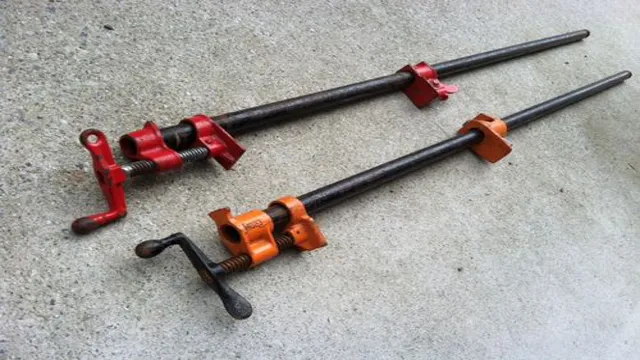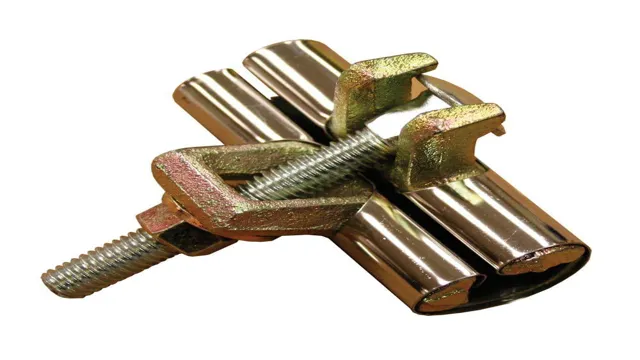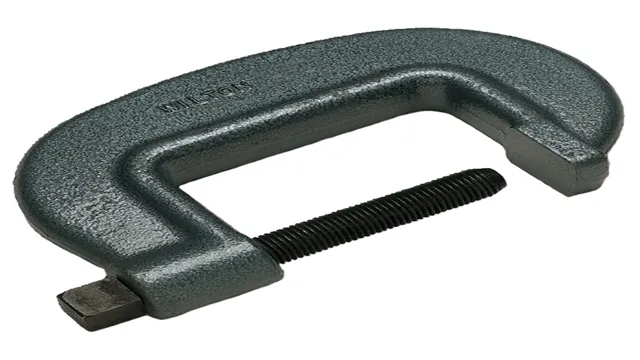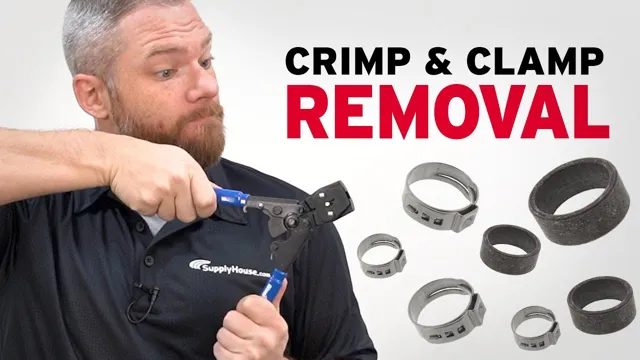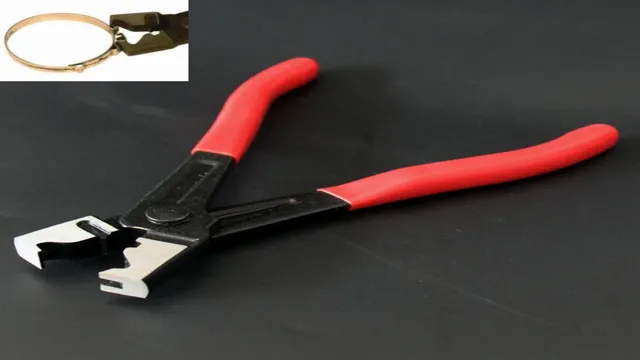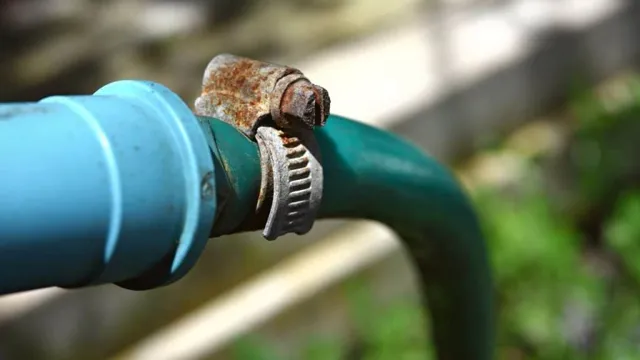Can You Use Hose Clamps on Fuel Lines? Pros and Cons explained.
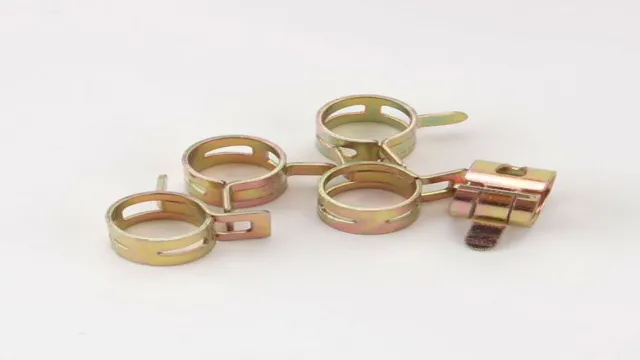
If you’re someone who’s interested in fixing vehicles or just an ordinary car owner, you probably already know that fuel lines are crucial components of your car’s engine. Fuel lines facilitate the transfer of fuel from the gas tank to the engine, which powers your vehicle. Now, let’s say you need to replace or repair a worn-out fuel line, and you’re wondering if using hose clamps on fuel lines is safe.
Well, the answer is not as simple as a yes or no. Depending on the type of hose clamp, the fuel line material, and the size of the hose clamp, it can be either safe or hazardous. In this blog, we’ll delve deeper into the topic to determine what type of hose clamp you need to use on your fuel line.
Introduction
If you’re working on a fuel system, you might wonder whether you can use hose clamps on fuel lines. The answer is yes, but you need to choose the right type of clamps. Regular worm gear clamps are not recommended for fuel lines because they can cut into the hose and cause leaks.
Instead, you should use fuel injection clamps, which have a smooth band and a rolled edge that won’t damage the hose. These clamps are specifically designed for use on fuel lines and are made from materials that can withstand the pressures and temperatures found in a fuel system. So, while hose clamps can be used on fuel lines, make sure you select the right type to ensure safety and reliability.
What are Hose Clamps?
Hose clamps are devices used to fasten hoses to fittings or pipes to prevent leaks in fluid systems. They are also known as hose clips or hose saddles. Hose clamps come in various sizes and types, including worm gear, t-bolt, spring, and ear.
These clamps are made of different materials, such as stainless steel, zinc-plated steel, and plastic. They are used in a wide variety of applications, including automotive industries, plumbing, and irrigation systems. Hose clamps are a crucial component in maintaining the integrity of fluid systems by ensuring tight seals and preventing leaks.
So, whether you are a professional or a DIY enthusiast, hose clamps are a must-have tool for your toolkit.
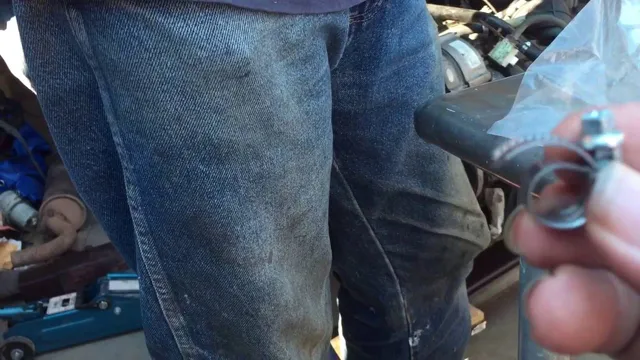
What are Fuel Lines?
Fuel lines are an essential component of any vehicle’s fuel system. They are responsible for transporting fuel from the gas tank to the engine, ensuring that enough fuel is available to power the vehicle. Fuel lines can be made from a variety of materials, including rubber, plastic, and stainless steel, depending on the vehicle’s make and model.
These lines can become clogged or damaged over time, which can lead to poor vehicle performance or even a fire risk. Regular maintenance and inspection of fuel lines can prevent these issues, keeping your vehicle running smoothly and safely. Overall, fuel lines are a critical part of a vehicle’s operation, and it’s essential to make sure they are functioning correctly.
Why Use Hose Clamps on Fuel Lines?
If you’re wondering why to use hose clamps on fuel lines, there are several reasons why this step is essential. Hose clamps, also called hose clips or hose clamping tools, are devices that keep hoses securely in place to prevent leaks, bursts, or other potential damages. They are vital in fuel line systems since a fuel leak can create hazardous situations, resulting in fires or explosions.
Using a hose clamp ensures that the fuel line is properly sealed, maintaining the fuel’s flow and pressure. So, if you want to ensure your fuel system’s safety and avoid any unexpected accidents, using hose clamps is inevitable.
Risks of Using Hose Clamps on Fuel Lines
Using hose clamps on fuel lines can be risky and potentially dangerous. While hose clamps may seem like a convenient and easy way to secure fuel lines, they are not specifically designed for this purpose. Hose clamps are prone to loosening over time and can fail to maintain a tight seal on the fuel line, leading to leaks.
These leaks can be highly dangerous because fuel is highly flammable and can ignite easily. Additionally, hose clamps can damage the fuel line when they are overtightened, causing the fuel line to burst, which can be catastrophic. If you’re wondering if you can use hose clamps on fuel lines, it’s not recommended.
Instead, use purpose-built clamps specifically designed for fuel lines to ensure your safety and reliability on the road. Don’t take any risks when it comes to fuel line safety – always use the right tools for the job.
Potential for Fuel Leaks
When it comes to fuel lines, safety is of utmost importance. Hose clamps have been a popular choice for securing fuel lines in the automotive world for years. However, there are potential risks associated with using hose clamps on fuel lines that should be taken seriously.
One major risk is the potential for fuel leaks. Hose clamps can become loose over time, leading to fuel leaks that can pose a serious fire hazard. Additionally, hose clamps can also damage the fuel line itself, causing it to degrade and eventually fail.
To minimize these risks, it is recommended to use high-quality, fuel-resistant hoses and fittings specifically designed for use with fuel systems. Regular inspections and maintenance should also be conducted to ensure that all connections remain secure and leak-free. Taking these precautions can help ensure a safer and more reliable fuel system for your vehicle.
Corrosion and Wear
When it comes to fuel lines, it’s important to consider the risks of using hose clamps. While they may seem like a simple and cost-effective solution, they can actually cause significant damage over time due to corrosion and wear. Hose clamps can create points of stress on the fuel line, causing it to weaken and potentially develop cracks.
This can lead to fuel leaks, which can be dangerous and costly to repair. Additionally, hose clamps can damage the protective coating on the fuel line, exposing it to moisture and other corrosive elements. Over time, this can cause the fuel line to deteriorate and need to be replaced.
It’s important to weigh the pros and cons of using hose clamps, and consider alternative solutions such as crimping or using specialized fuel line fittings. Don’t let the simplicity of hose clamps fool you – they can cause significant problems in the long run.
Temperature and Vibration
Fuel Lines When it comes to the mechanics of a vehicle, it’s important to understand the risks associated with using hose clamps on fuel lines. One of the biggest risks is temperature. When the engine heats up, so do the fuel lines.
Hose clamps can cause a restriction in the line, which can create pressure that can cause the fuel line to burst. This can be dangerous, as it can lead to fuel leaks or even fires. In addition, vibration can also be a risk factor.
The constant motion of the engine can cause the hose clamps to loosen, which can cause the fuel lines to disconnect or leak. To avoid these risks, it’s important to use the right type of clamps that are specifically designed for use with fuel lines. It’s also important to inspect the fuel lines regularly for any signs of wear or damage.
At the first sign of a problem, it’s important to have the fuel lines repaired or replaced immediately. By taking these precautions, you can help ensure the safety and longevity of your vehicle.
Alternatives to Hose Clamps
When it comes to fuel lines, using hose clamps can be risky. These clamps are designed to apply pressure and secure a connection, but they can also be over-tightened, leading to leaks or even catastrophic failures. Instead, consider alternatives such as crimping or using specialized connectors.
Crimping involves using a special tool to compress a metal sleeve around the hose and fitting, creating a secure and permanent connection. Specialized connectors, such as those made by AN fittings, offer a range of secure and reliable options. Ultimately, it’s important to choose the right solution for your particular situation, taking into account factors such as pressure, temperature, and chemical compatibility.
By doing so, you can ensure that your fuel lines are reliable and safe.
Compression Fittings
Compression fittings are a great alternative to hose clamps when it comes to joining pipes or tubes together. They are much more secure and reliable than hose clamps, and they offer a more permanent solution. Compression fittings work by compressing a metal ring onto the pipe or tube, creating a tight seal that prevents leaks and ensures a secure connection.
The best thing about compression fittings is that they don’t require any special tools, making them easy to install and replace. They are also more versatile than hose clamps since they can be used with a wide range of materials, including copper, PVC, and stainless steel. So, if you’re looking for a reliable and long-lasting solution for your plumbing needs, compression fittings are definitely worth considering.
Barbed Fittings
Barbed fittings are an alternative to hose clamps, and they offer a more secure connection. These fittings are designed with ridges or barbs around the circumference of the fitting, which grip onto the inside of the hose when inserted. This creates a tight seal that won’t slip off or leak.
Barbed fittings are ideal for applications that involve high pressure, vibration, or frequent temperature changes. They are commonly used in automotive, industrial, and agricultural applications. When it comes to choosing the right barbed fitting for your application, it is important to consider factors such as hose size, material, and compatibility with the fluid or gas being transferred.
Some fittings may require a specific type of clamping mechanism to ensure a secure connection. Overall, barbed fittings offer a superior solution to standard hose clamps. They provide a dependable, leak-free seal that can withstand harsh conditions without slipping off.
So the next time you need to make a hose connection, consider using a barbed fitting for a more secure and reliable option.
Quick-Connect Fittings
Quick-connect fittings are an excellent alternative to hose clamps when it comes to securely and quickly joining two hoses or pipes together. These fittings are designed to connect hoses and pipes without the need for tools or specialized skills. They come in various shapes and sizes to accommodate different types of hoses and can be used in a range of applications, including plumbing, automotive, and pneumatic systems.
Quick-connect fittings consist of two parts: a male and a female fitting that snap together, creating an airtight seal. They are designed to withstand high pressure and temperature and are easy to install and remove, making them an ideal solution for situations where frequent modifications or repairs are necessary. With quick-connect fittings, you can easily connect, disconnect, and re-attach hoses and pipes without the need for wrenches or pliers.
This is the reason why quick-connect fittings are gaining popularity in the industry.
Conclusion
In conclusion, the question of whether or not you can use hose clamps on fuel lines is a bit like asking if you can use a banana as a hammer. While it may technically work in some cases, it’s not a good idea for a variety of reasons. Fuel lines require special fittings and materials to ensure proper flow and safety, and using hose clamps can lead to leaks, kinks, and even fuel combustion.
So save the hose clamps for less critical applications and invest in the proper fittings for your fuel lines. Your car (and your mechanic) will thank you.”
FAQs
How do hose clamps work on fuel lines?
Hose clamps work by tightening down on the hose and creating a seal around a fitting. This prevents fuel from leaking out of the line.
Can hose clamps be used on all types of fuel lines?
No, hose clamps should only be used on certain types of fuel lines. It is important to consult the manufacturer’s recommendations before using hose clamps on fuel lines.
Are there any safety precautions to take when using hose clamps on fuel lines?
Yes, it is important to make sure that the fuel line is properly secured before using hose clamps. Additionally, it is important to keep the area around the fuel lines clean and free of debris to prevent any potential hazards.
How tight should hose clamps be on fuel lines?
Hose clamps should be tightened to the manufacturer’s recommended torque specifications. Over-tightening can cause damage to the fuel line, while under-tightening can cause leaks.
Can hose clamps be reused on fuel lines?
It is generally recommended to not reuse hose clamps on fuel lines, as reusing them can cause the clamp to lose its ability to hold the hose securely in place.
What are some alternatives to using hose clamps on fuel lines?
Some alternative methods for securing fuel lines include using crimp fittings or push-on fittings. It is important to consult the manufacturer’s recommendations before using any alternative methods.
Can hose clamps be used on high-pressure fuel lines?
No, hose clamps should not be used on high-pressure fuel lines, as they are not designed to withstand the pressure. It is important to use the appropriate fittings and clamps for high-pressure fuel lines.

